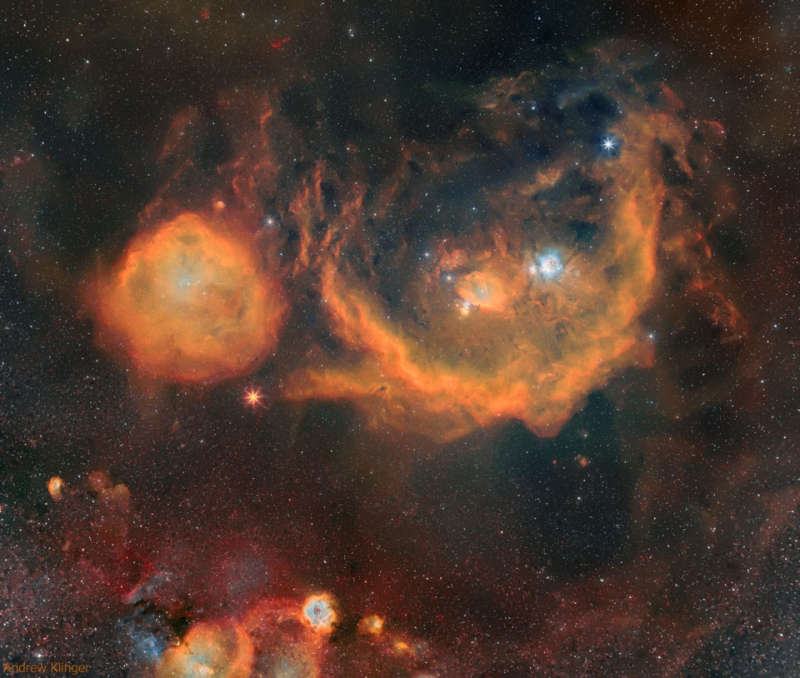Credit & Copyright: Andrew Klinger
Explanation:
The constellation of Orion is much more than three stars in a row.
It is a direction in space that is
rich with impressive nebulas.
To better appreciate this well-known swath of sky, a new
long exposure image
was taken over several clear nights in January, February and March.
After 23 hours of camera time and
untold hours of image processing, the featured collage in the light of
hydrogen,
oxygen, and
sulfur
was produced spanning over 40 times the
angular diameter of
the Moon.
Of the many interesting details that have become visible,
one that particularly draws the eye is
Barnard's Loop,
the bright red orange arc just to the right of the image center.
The Rosette Nebula is not the giant orange nebula just to the left of the
image center -- that is larger but lesser known nebula known as the
Meissa Ring.
The Rosette Nebula is visible, though: it is the
bright orange, blue and white nebula near the image bottom.
The bright orange star just left of the frame center is
Betelgeuse,
while the bright blue star on the upper right is
Rigel.
About those
famous three stars that cross the belt of
Orion the Hunter
--
in this busy frame they can be hard to locate, but a
discerning
eye
will find them just to the right of the image center.
1999 2000 2001 2002 2003 2004 2005 2006 2007 2008 2009 2010 2011 2012 2013 2014 2015 2016 2017 2018 2019 2020 2021 2022 2023 2024 2025 |
Yanvar' Fevral' Mart Aprel' Mai Iyun' Iyul' Avgust Sentyabr' Oktyabr' Noyabr' Dekabr' |
NASA Web Site Statements, Warnings, and Disclaimers
NASA Official: Jay Norris. Specific rights apply.
A service of: LHEA at NASA / GSFC
& Michigan Tech. U.
|
Publikacii s klyuchevymi slovami:
Orion - Orion
Publikacii so slovami: Orion - Orion | |
Sm. takzhe:
Vse publikacii na tu zhe temu >> | |
